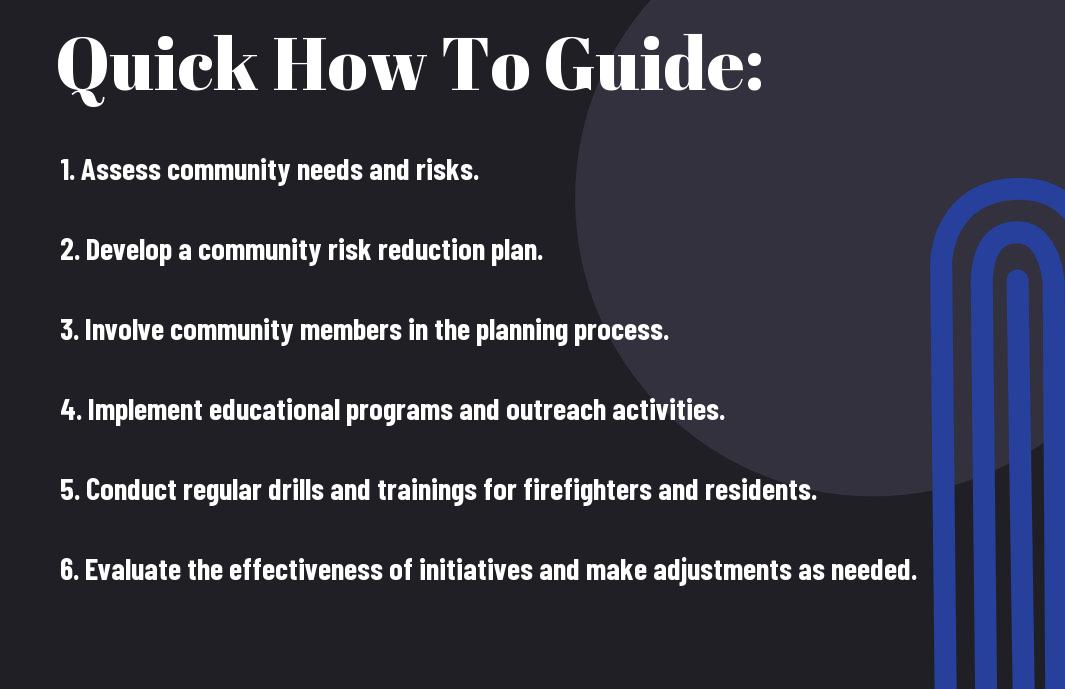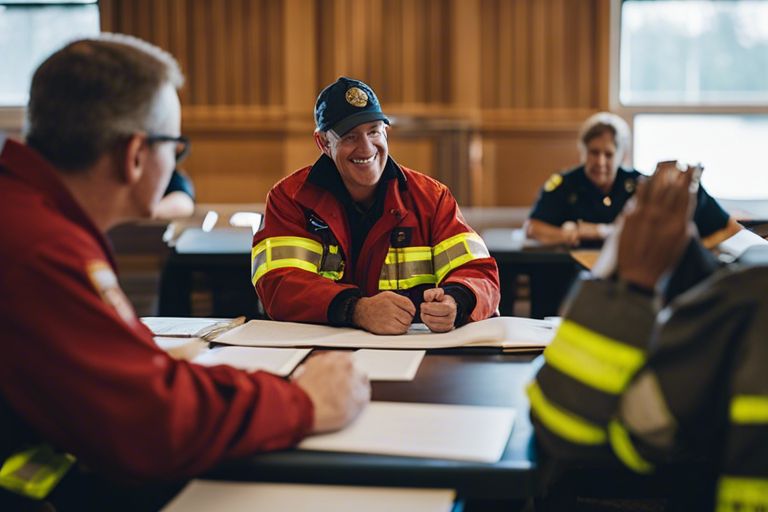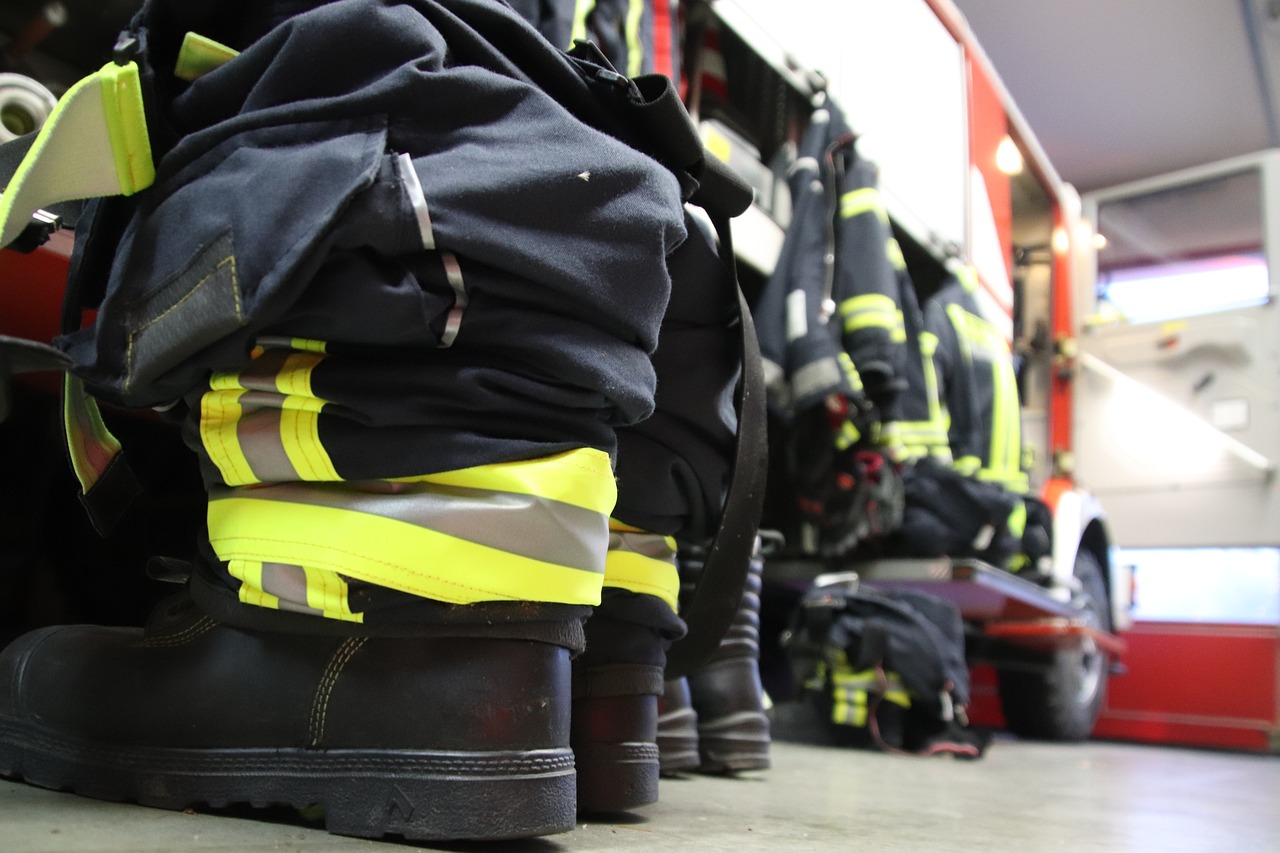You are the unsung heroes of your community, ensuring safety and protection in times of crisis. However, to further enhance your impact and effectiveness, implementing community risk reduction initiatives is crucial. These initiatives can significantly decrease the number of emergencies and enhance the overall safety of your community. In this guide, you will learn practical steps and strategies to successfully implement community risk reduction initiatives in your rural volunteer fire department, making a significant positive impact on the welfare of those around you.
Understanding the Importance of Community Risk Reduction
Before submerging into the implementation of Community Risk Reduction (CRR) initiatives in your rural volunteer fire department, it is important to understand the significance of focusing on community risk reduction. CRR involves identifying and prioritizing risks in your community to develop strategies that prevent or mitigate these risks before emergencies occur.
Identifying High-Risk Groups and Areas
To effectively implement CRR initiatives, you need to identify high-risk groups and areas in your community. These could include elderly residents, children, low-income households, and geographical locations prone to wildfires or floods. By pinpointing these vulnerable groups and areas, you can tailor your risk reduction efforts to address their specific needs and vulnerabilities.
Factors Contributing to Community Risk
- Population density: High population density can lead to increased risks of fires and other emergencies.
- Infrastructure: Aging or inadequate infrastructure can contribute to increased risks.
Risk factors such as population density, infrastructure vulnerabilities, socioeconomic factors, and environmental hazards all play a role in determining the level of risk in your community. The better you understand these factors, the more effectively you can implement targeted risk reduction measures to enhance community safety.
Assessing Your Department’s Readiness
The first step in implementing Community Risk Reduction (CRR) initiatives in your rural volunteer fire department is to assess your department’s readiness. You can start by reviewing the Supporting CRR Programs: A State Guide for valuable insights and guidance tailored to your specific region.
Evaluating Current Resources and Capabilities
If you want to enhance your CRR efforts, you need to evaluate your current resources and capabilities. Consider your personnel, equipment, training, and community partnerships. Identify areas where you excel and where there is room for improvement. This assessment will help you better understand what assets you can leverage for successful CRR implementation.
Identifying Gaps and Areas for Improvement
Assessing and identifying gaps in your department’s resources and capabilities is crucial for effective CRR initiatives. For instance, if you lack specialized training in community education or data analysis, these gaps could hinder your ability to implement targeted risk reduction programs. By recognizing these areas for improvement, you can develop strategies to address them and strengthen your overall CRR impact.
Building a Strong Foundation for CRR Initiatives
Little can be achieved without a solid foundation when implementing community risk reduction (CRR) initiatives in a rural volunteer fire department. Establishing a CRR team and clearly defining roles is the first step towards success.
Establishing a CRR Team and Roles
Initiatives: As you begin on implementing CRR initiatives, it is important to form a dedicated team within your volunteer fire department. Assign specific roles to team members such as CRR coordinator, data analyst, community outreach coordinator, and training officer. Each role plays a vital part in ensuring the efficient execution of CRR strategies.
Developing a Comprehensive CRR Plan
Roles: In developing a comprehensive CRR plan, your team must collaborate to assess community risks, set objectives, prioritize initiatives, and establish measurable outcomes. Your plan should encompass fire prevention, safety education, community engagement, and partnerships with local organizations to address specific risks effectively.
Securing Funding and Resources
Team: Securing funding and resources is crucial to sustain your CRR initiatives in the long term. Your team should actively seek out grants, donations, and partnerships with local businesses or government agencies to support your programs and initiatives. Additionally, establish a budget and resource allocation plan to ensure the efficient use of available funds.
This foundation is important for the success of your CRR initiatives. By building a strong team, developing a comprehensive plan, and securing adequate funding, you set yourself up for impactful and sustainable risk reduction efforts in your community.
Implementing Effective CRR Strategies
Tips for Conducting Risk Assessments and Surveys
Your Community Risk Reduction efforts begin with conducting thorough **risk assessments** and surveys to identify potential hazards and vulnerabilities in your community. **Engage** with residents, businesses, and local authorities to gather valuable insights and data that will inform your CRR initiatives. **Analyze** the information collected to prioritize risks and focus on areas where interventions can have the most significant impact. **Involve** your **volunteer firefighters** in this process to ensure a comprehensive understanding of the community’s needs.
- **Involve** various stakeholders in the assessment process, including community members, local businesses, and government agencies.
- **Prioritize** risks based on severity, frequency, and potential impact on the community
- **Regularly** update your **risk assessments** to adapt to changing community needs and emerging threats.
Assume that by conducting regular and comprehensive risk assessments, you are laying a strong foundation for effective **Community Risk Reduction** initiatives that can make a real difference in your community.
How to Develop and Implement Public Education Programs
Any **Community Risk Reduction** strategy should include robust public education programs aimed at raising awareness and promoting **safety** practices within the community. **Collaborate** with local schools, community centers, and other organizations to reach a wide audience with your **educational** initiatives. **Design** informational materials, **workshops**, and events that are engaging, relevant, and **accessible** to all community members. **Measure** the impact of your **public education** efforts through surveys, feedback, and data analysis to continually **improve** their effectiveness.
Implement public education programs that address specific **risks** identified in your **risk assessments**, such as **fire prevention**, **emergency** preparedness, and **home safety** tips. By tailoring your **educational** initiatives to the needs of your community, you can **empower** residents to take proactive steps to reduce **risks** and enhance overall **safety**.
Strategies for Partnering with Local Organizations and Agencies
Organizations playing a vital role in strengthening **Community Risk Reduction** efforts are local **nonprofit organizations** and government agencies. **Collaborating** with these **entities** can **enhance** the reach and impact of your **CRR** initiatives. **Establish** partnerships with local **Red Cross** chapters, housing authorities, and **health** departments to leverage their resources, expertise, and networks. **Coordinate** joint **initiatives** and programs that address **community** needs comprehensively and **sustainably**.
Strategies for **partnering** with local organizations and agencies can include **joint** training sessions, resource sharing, and **co-promotion** of **events** and campaigns. By **pooling** resources and **expertise**, you can maximize the effectiveness of your **Community Risk Reduction** efforts and create a **holistic** approach to enhancing community **safety**.
Overcoming Common Challenges in Rural Areas
Now let’s address some of the common challenges that rural volunteer fire departments face when implementing Community Risk Reduction (CRR) initiatives. One major obstacle is the limited availability of resources and budget constraints.
Addressing Limited Resources and Budget Constraints
One way to overcome this challenge is by seeking partnerships with local businesses, community organizations, and government agencies. By forming collaborations, you can access additional resources, funding, and support for your CRR efforts. Additionally, you can explore grant opportunities specifically tailored for rural fire departments to supplement your budget.
How to Recruit and Retain Volunteers for CRR Efforts
On the issue of recruiting and retaining volunteers for your CRR initiatives, it’s necessary to emphasize the value and impact of their contributions to the community. Recognize and appreciate their efforts regularly to keep them motivated and engaged. Providing training opportunities, flexible scheduling, and recognition programs can also help attract and retain volunteers.
Areas where you can improve include cultivating a positive and inclusive organizational culture that values the diversity of skills and backgrounds that each volunteer brings. By fostering a sense of belonging and purpose within your department, you can enhance volunteer satisfaction and retention rates for CRR initiatives.
Strategies for Reaching Remote or Isolated Communities
While implementing CRR initiatives in remote or isolated communities may present unique challenges, your efforts can significantly impact the safety and well-being of these areas. Utilize technology such as social media, email newsletters, and community websites to reach residents and raise awareness about fire safety and prevention. Establishing partnerships with local leaders, schools, and other community groups can also help expand your reach and effectiveness in these hard-to-reach areas.
Measuring Success and Evaluating Progress
Once again, measuring the success of your Community Risk Reduction (CRR) initiatives is crucial to understanding their impact and effectiveness in your community. Evaluating progress not only helps you track the performance of your programs but also allows you to make data-driven decisions for future improvements.
How to Track and Analyze CRR Data and Metrics
There’s no one-size-fits-all approach to tracking and analyzing CRR data and metrics. You need to identify key performance indicators (KPIs) that are relevant to your specific initiatives. Whether it’s the number of smoke alarms installed, the percentage of households with fire escape plans, or the frequency of community safety workshops, collecting and analyzing data on these metrics will provide valuable insights into the effectiveness of your CRR programs.
Tips for Conducting Regular Program Evaluations
Now, conducting regular program evaluations is imperative to ensuring that your CRR initiatives are meeting their goals and objectives. This process involves assessing the outcomes of your programs, identifying strengths and areas for improvement, and implementing changes as needed. By evaluating your initiatives on a consistent basis, you can optimize their impact on community safety and enhance your overall CRR strategy.
- Regularly review program goals and objectives
- Seek feedback from community members and stakeholders
- Adjust strategies based on evaluation findings
Thou may also consider using external evaluators or partnering with local universities to conduct more in-depth assessments of your CRR initiatives.
Using Feedback to Improve CRR Initiatives
With the right feedback mechanisms in place, you can gather valuable insights from community members, stakeholders, and program participants to enhance your CRR initiatives. Feedback can come in various forms, such as surveys, focus groups, and community meetings, and can help you identify areas where improvements are needed and opportunities for innovation.
To continually improve and refine your CRR initiatives, it’s important to actively listen to the feedback you receive, analyze it critically, and incorporate relevant suggestions into your programs. This iterative process will not only strengthen the impact of your initiatives but also demonstrate your commitment to engaging with the community and prioritizing their safety needs.

To wrap up
On the whole, implementing community risk reduction initiatives in a rural volunteer fire department requires careful planning, collaboration with community stakeholders, and ongoing evaluation of programs. By focusing on prevention through education, inspections, and community engagement, you can reduce the number of emergencies and enhance the safety of your community.
Remember to tailor your initiatives to the unique needs and resources of your community, seek out partnerships with other organizations, and continuously seek feedback from residents to ensure the effectiveness of your efforts. By taking these steps, you can make a significant impact in reducing risks and enhancing the overall resilience of your community.



